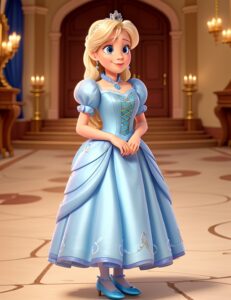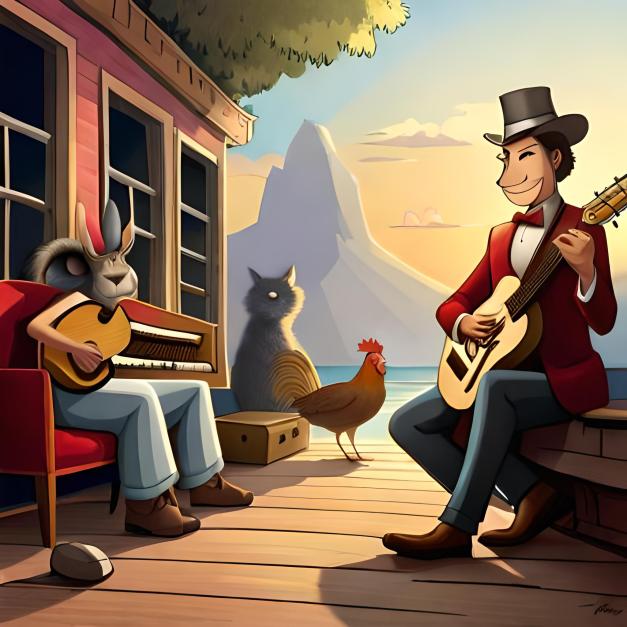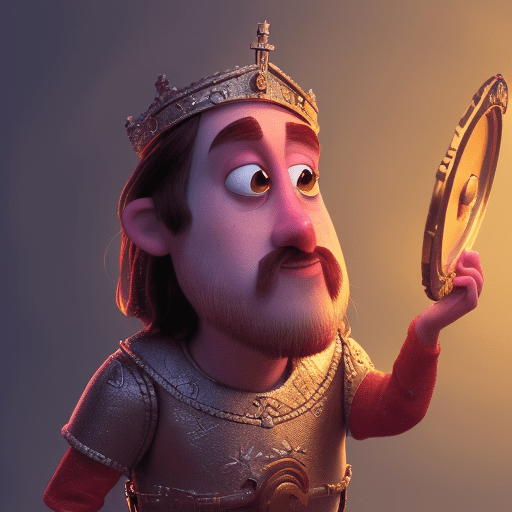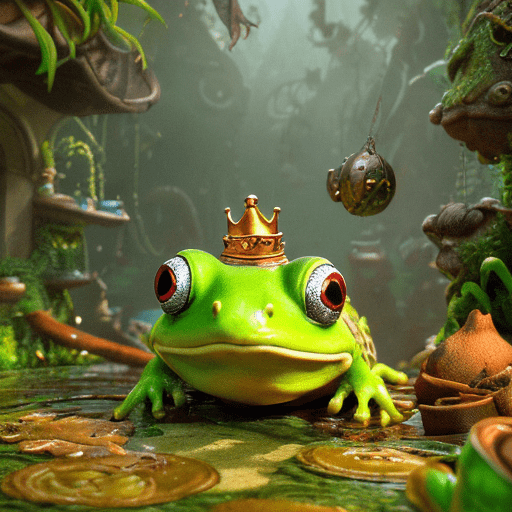Fairy tales are a genre of short stories that have captivated children’s imaginations for centuries. These tales typically involve magical elements, enchanting creatures, and captivating storylines. The popularity of fairy tales among kids can be attributed to several reasons.
Furthermore, fairy tales appeal to children’s emotions. These stories often contain universal themes such as love, bravery, friendship, and overcoming challenges. Kids can relate to the emotions expressed by the characters, allowing them to empathize and explore their own emotions. Fairy tales can provide comfort, inspiration, or even teach valuable life lessons, which help children navigate their complex emotions.
Fairy Tale Short Stories Genre: Examples
Best Fairy Tale Stories of all Time
Adventure Stories in English with Pictures
Fairy Tale Short Stories Genre: Authors
Some of the famous authors of the fairy tale genre are:
- Hans Christian Andersen: Andersen is often considered the father of the modern fairy tale. He wrote numerous fairy tales, including “The Little Mermaid,” “The Ugly Duckling,” and “The Snow Queen.” His stories introduced moral lessons, deep emotions, and rich symbolism, which revolutionized the genre. Andersen’s works were influential in shaping the modern fairy tale tradition, and his compelling characters and imaginative storytelling continue to captivate readers.
- Charles Perrault: Perrault was a French writer who laid the foundation for the fairy tale genre with his collection titled “Tales of Mother Goose.” This collection included famous tales such as “Cinderella,” “Little Red Riding Hood,” and “Sleeping Beauty.” Perrault’s stories were unique for their use of magic, supernatural elements, and moral teachings, making them hugely popular and influential throughout Europe.
- Brothers Grimm: Wilhelm and Jacob Grimm, famously known as the Brothers Grimm, were German folklorists who collected and published a vast number of fairy tales. Their collection, titled “Grimms’ Fairy Tales,” featured stories like “Hansel and Gretel,” “Snow White,” and “Rapunzel.” The Grimms’ works transformed traditional folklore into literary fairy tales, incorporating elements of fantasy, folklore, and psychological insights. Their enduring legacy lies in their preservation of countless folk tales, mythology, and cultural heritage.
- Andrew Lang: Lang was a Scottish author and collector of fairy tales. He is known for his “Coloured Fairy Books” series, which included twelve volumes with tales from various countries. His books introduced readers to a wide range of fairy tales, interweaving diverse cultures and traditions. Lang’s collections provided a wealth of stories that have influenced subsequent writers and allowed readers to explore the vast world of fairy tales beyond the well-known classics.
Fairy Tale Short Stories Genre : History
The genre of Fairy Tale emerged in various cultures and time periods throughout history. Its origins are believed to date back to ancient times, with oral storytelling traditions being passed down from generation to generation. However, the specific time and place of its emergence are difficult to pinpoint due to its widespread adoption and adaptation by different cultures.
Historically, cultural and social factors played a significant role in shaping fairy tales. These stories often reflected the beliefs, values, and norms of the societies in which they were created. In some cases, they served as cautionary tales or moral lessons, teaching children and adults about the consequences of certain behaviors or actions. Additionally, fairy tales were influenced by larger cultural movements, such as the Romantic movement in Europe during the 18th and 19th centuries, which emphasized the imagination, emotions, and the return to nature.
While many fairy tales were passed down orally and did not have specific authors, some pioneers and innovators can be identified. Charles Perrault, a French author and member of the 17th-century French court, is often credited with popularizing the fairy tale genre through his collection of stories, including “Cinderella,” “Little Red Riding Hood,” and “Sleeping Beauty.” The Brothers Grimm, Jacob and Wilhelm Grimm, were German folklorists and writers who collected and published numerous fairy tales in the early 19th century, including “Snow White,” “Rumpelstiltskin,” and “Hansel and Gretel.” Their efforts were instrumental in preserving and documenting traditional tales from various regions of Europe.
Some landmark works in the fairy tale genre include “Alice’s Adventures in Wonderland” by Lewis Carroll, published in 1865, which blended elements of fantasy and surrealism with traditional fairy tale themes. Hans Christian Andersen, a Danish author, is widely regarded as one of the greatest fairy tale writers. His works, including “The Little Mermaid,” “The Ugly Duckling,” and “The Emperor’s New Clothes,” combined moral lessons with vivid storytelling.
In terms of trends, fairy tales have undergone various adaptations and interpretations over time. In the 20th century, authors such as J.R.R. Tolkien and C.S. Lewis incorporated fairy tale elements into their fantasy novels, adding depth and complexity to the genre. Additionally, the Disney animated films, starting with “Snow White and the Seven Dwarfs” in 1937, have played a significant role in popularizing fairy tales and introducing them to a global audience.
Overall, the emergence and development of the fairy tale genre have been shaped by cultural traditions, social values, and the creative contributions of numerous authors and storytellers throughout history.
Fairy Tale Short Stories Genre: Characteristics
The genre of fairy tales is characterized by magical and fantastical elements, often involving enchanted creatures, supernatural events, and moral lessons. These stories usually have a simple and straightforward plot structure, with a clear conflict and resolution. The characters in fairy tales are often archetypes, such as the hero, princess, villain, or wise old person, and they typically go through a transformative journey. The setting of a fairy tale can be a mystical land, a royal castle, or even an ordinary village.
Language is often used in fairy tales to create a sense of enchantment and whimsy. The vocabulary may include descriptive and poetic language to draw readers into a magical world. The plot usually follows a linear progression, often revolving around a quest, a battle between good and evil, or the overcoming of obstacles. The protagonists face challenges and must demonstrate bravery, kindness, or perseverance to succeed.
The themes commonly found in fairy tales include good vs. evil, the importance of kindness and integrity, the power of love, the rewards of hard work and determination, and the consequences of greed and selfishness. Fairy tales often convey moral lessons and teach kids about ethics and values. They provide young readers with escapism, encouraging imagination and creativity, and offer a sense of wonder and possibilities.
Fairy tales appeal to children’s interests as they transport them into magical worlds where anything can happen. These stories engage their imaginations, stimulate creative thinking, and allow children to explore emotions, moral dilemmas, and life lessons in a safe and controlled environment. Fairy tales can also help children make sense of the world around them by depicting universal struggles and offering solutions.
Overall, fairy tales aim to entertain, educate, and inspire children, allowing them to dream, learn, and grow while being immersed in tales of courage, magic, and happily-ever-afters.
Fairy Tale Short Stories Genre: Benefits
Reading fairy tales can have several benefits for kids. Here’s how it enhances their reading comprehension, vocabulary, critical thinking skills, broadens their horizons, enriches their culture, fosters their creativity, and motivates them to pursue their goals and dreams:
- Reading Comprehension: Fairy tales often have complex storylines and characters, which challenge kids to understand and analyze the text. They learn to follow the narrative structure, identify key events, and comprehend different perspectives within the story.
- Vocabulary Expansion: Fairy tales expose children to a wide range of vocabulary. They encounter words specific to the genre, such as magical terms, fantastical creatures, and enchanting settings. This exposure helps expand their vocabulary and improves their overall language skills.
- Critical Thinking: Fairy tales often involve moral dilemmas, conflicts, and problem-solving situations. By analyzing and discussing these aspects of the story, kids develop critical thinking skills. They learn to evaluate characters’ motivations, make predictions, and examine the consequences of different actions.
- Broadening Horizons: Fairy tales typically transport readers to imaginary worlds and unfamiliar cultures. By reading about different settings, customs, and traditions, children gain exposure to diverse perspectives, broadening their understanding of the world and encouraging empathy towards others.
- Cultural Enrichment: Fairy tales are embedded with cultural references and historical elements. By exploring these stories, kids engage with cultural traditions, folklore, and mythologies, fostering a deeper appreciation for their own culture and those of others.
- Fostering Creativity: Fairy tales encourage imaginative thinking and creativity. Children can envision magical worlds, creatures, and scenarios while reading, which stimulates their own creativity and problem-solving abilities. They may even be inspired to create their own stories or artwork based on the tales they read.
- Motivation and Empowerment: Fairy tales often revolve around themes of courage, perseverance, and overcoming obstacles. As kids identify with the protagonists in these stories, they can find motivation and empowerment to pursue their dreams and goals. Fairy tales can teach important life lessons about resilience and believing in oneself.
In summary, reading fairy tales enhances kids’ reading comprehension, vocabulary, and critical thinking skills. It broadens their horizons, enriches their culture, and fosters their creativity. By showcasing characters with strong goals and dreams, fairy tales can motivate and empower children to pursue their own aspirations.
Fairy Tale Short Stories Genre: Tips
Tips and advice on reading:
- Familiarize yourself with different fairy tales: Read a variety of fairy tales from different cultures and time periods to understand their common themes, motifs, and archetypes. This will help you analyze and appreciate the genre better.
- Pay attention to narrative elements: Fairy tales often follow a specific narrative structure with clear exposition, rising action, climax, and resolution. Look for these elements while reading to understand the story’s progression.
- Analyze character development: Fairy tales often feature archetypal characters such as heroes, villains, and magical beings. Examine how these characters evolve throughout the story and identify their traits and motivations.
- Look for moral lessons and themes: Fairy tales often convey moral teachings and explore themes such as good versus evil, the consequences of one’s actions, and the power of love and friendship. Reflect on these messages while reading and discuss them with others.
Tips and advice on writing:
- Understand the genre conventions: Study different fairy tales and analyze their structure, language, and themes. Use these conventions as a foundation while writing your own fairy tale.
- Create memorable characters: Develop characters that embody archetypal traits and have clear goals and challenges. Consider using magical elements or animals that possess human-like qualities to add depth to your story.
- Use descriptive language: Enhance the magical and imaginative aspects of your fairy tale by using vivid and sensory language. Paint a picture with words to engage readers and capture their imaginations.
- Add twists and surprises: While fairy tales often follow predictable patterns, incorporating unexpected elements and plot twists can make your story more engaging and memorable.
Tips and advice on teaching:
- Provide a variety of fairy tales: Offer a diverse selection of fairy tales from different cultures and backgrounds to expose students to the global richness of the genre. This will help broaden their perspectives and foster cultural sensitivity.
- Encourage critical thinking: Ask students to analyze fairy tales by exploring the underlying messages, identifying moral lessons, and discussing the significance of certain characters or events. This will enhance their critical thinking skills and literary analysis abilities.
- Engage in creative activities: Encourage students to retell or rewrite fairy tales, create their own characters, or design alternate endings. These activities will spark their creativity and allow them to explore their storytelling skills.
- Create a classroom display: Decorate your classroom with illustrations, quotes, or students’ creative work related to fairy tales. This visual representation of the genre can serve as a constant reminder and spark conversations.
By following these tips and advice, you can fully explore and appreciate the potential of the fairy tale genre. Whether you’re reading, writing, or teaching fairy tales, these strategies will help you improve your skills and techniques while engaging, challenging, and supporting children in their literary journey.




